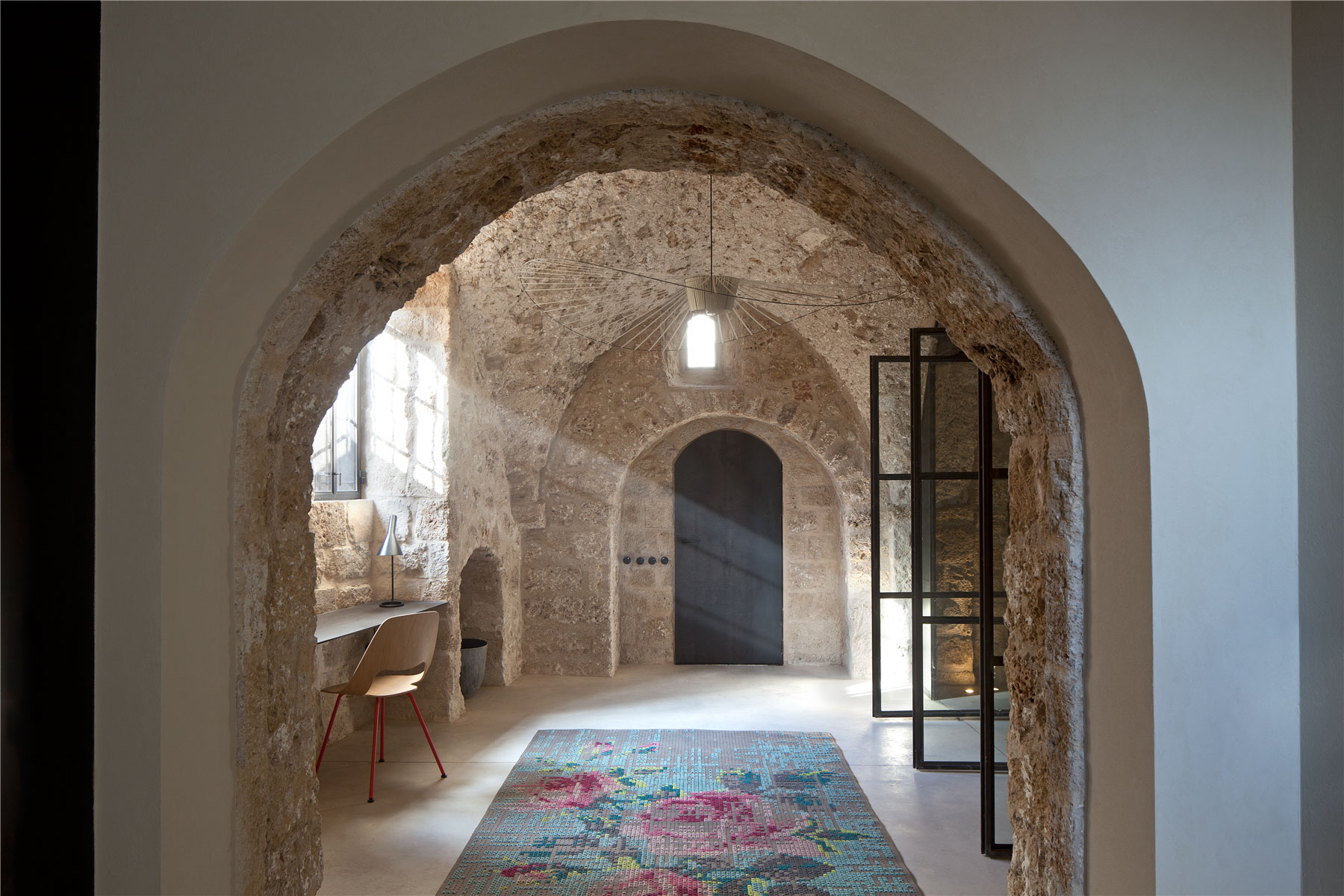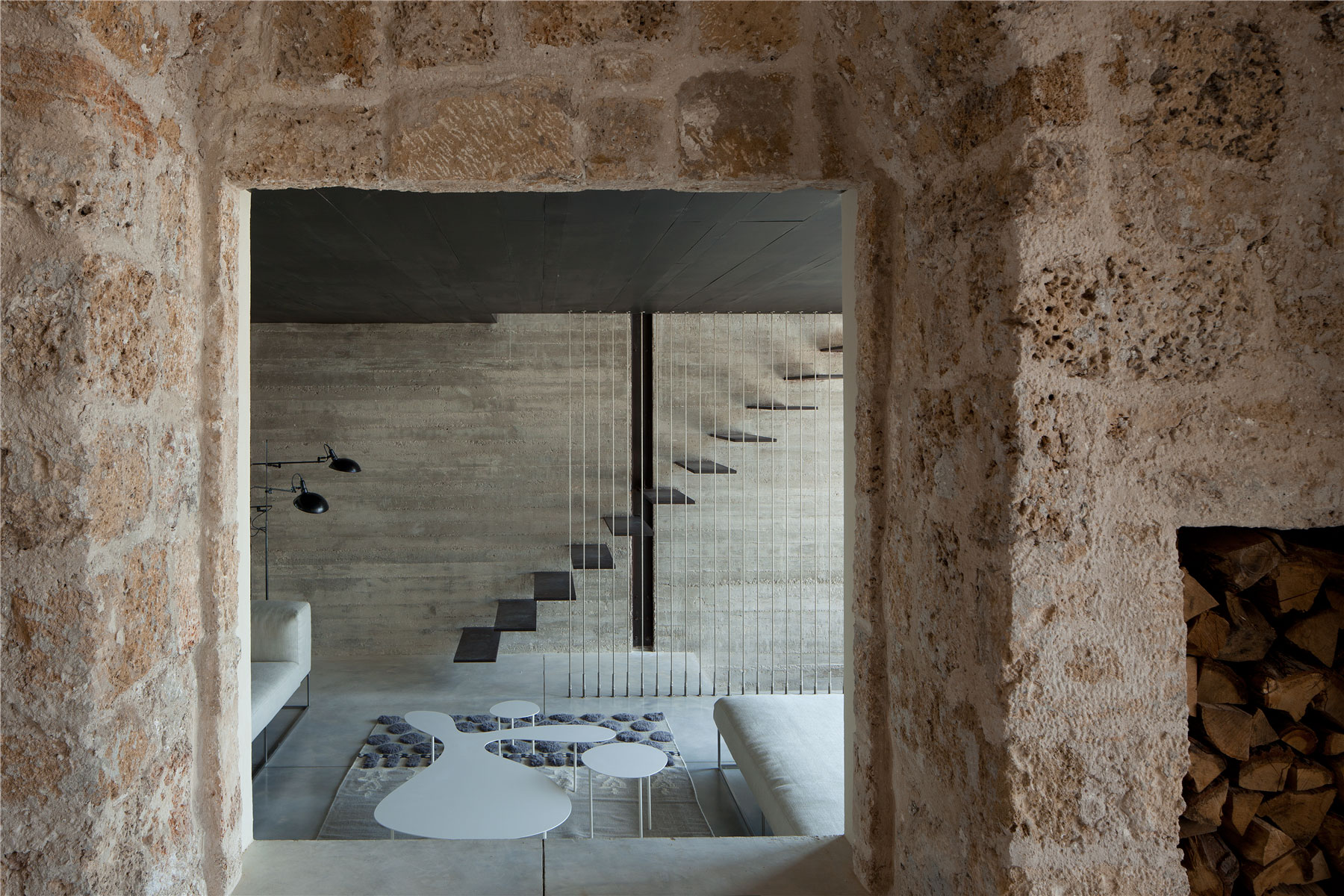Total floor area:180 sqm
Design & build:2013
Program: single family house
Jaffa, the city that has, forever, been the target of conquerors as well as political, economic and cultural struggles has, for the past few decades been on the sidelines of the Israeli – Palestinian conflict. Carefully avoiding the molten, unsolvable heart of the problem whilst attempting to preserve the existing balance of forces between political and economic issues. However, it appears that with regard to Jaffa’s ancient Kasbah, these issues are slowly being transformed from political to historical – the Kasbah which, since the establishment of the State of Israel has been taken from itsArab residents and settled with new immigrants, was a backward and disadvantaged area, primarily due to its bad sanitation infrastructure. So much so, that at one time, its demolition and the construction of new neighborhood was considered.
In the early 1960’s, following a public debate that called for its rehabilitation and restoration, architects Jacob Ya’ar, YonaPitlson, Sa’adiah Mandel and Eliezer Frankel, were given the task of developing a reconstruction program that envisaged the Kasbah becoming an Artists Quarter.
The reconstruction process also included archeological excavations which exposed the city’s historical layers from as far back as the Ancient Egyptians, the Biblical period, Napoleon’s conquest and even more. The Kasbah’s infrastructures were updated, its buildings were preserved and an Artists Quarter was established which never succeeded in creating a vibrant urban environment. Today, the visitor to the Kasbah enjoys a visit to an area that lacks any noticeable identity – where the many different artistic and cultural images seen in the area, such as the street signs for streets named after the symbols of the zodiac and the symbolic sculpture, alongside archeological findings such as cannons from Napoleon’s army, create a sterile, multi-layered and crypt like environment which leaves no room for the present.
The process leading to the loss of identity was aided by the fact that the Kasbah was bereft of inhabitants and also by the reconstruction and preservation process that imposed on the original environment, modernistic activities and actions in the quest for visual purity and the definition of the area as an “Artists Quarter”. This prevented the Kasbah’s development as an organic and diverse urban environment.
The Kasbah House
The building, located in the Kasbah and from which the architect PitsouKedem worked, tells its story well. Its story begins, so it would seem, in the 17th century when Jaffa was resettled. Evidence of this can be seen in construction technologies such as stone arches and vaults as well as the fact that it is difficult to decide if this was originally a single building or a structure to which other structures were added over time. In any event, no documentation exists as to its usage or of its original inhabitants.
The entrance to the building, set on the western slopes of the Kasbah, at a corner where two alleys leading to Jaffa Harbor meet, is from the lower alley. An iron door that preserved the proportions of the original entrance evokes a feeling that we are entering a protected and intimate space. This feeling is further enhanced due to the space being slightly lower than the street level of the upper alley and the sparsity of openings for light which were excluded with the buildings construction presumably out of consideration for the occupants’security.
The space is divided into two sections – one whose ceiling is a crossed vault, has been preserved as an individual room, separated by a glass panel and which is used as an optional guest room. The second is, in essence, a semi-public area including a work area and a guest bathroom and which is used as a junction between the structure’s upper sections via a staircase located at its end.
The staircase is followed by an exposed, concrete wall made from a rough wooden mold on one side and a railing of steel cables on the other – these accompany the vertical space created the entire height of the buildings three floors. The concrete wall with its imbedded steel pillars was born from construction needs as part of the change in upper floorlevels. It was cast to separate the building from the neighboring structure and perhaps constitutes the sole remaining indication of any architectural activity taking place at this location. All other spaces within the structure provide an impression of visiting a structure that has been frozen in time. However, a closer inspection of the design process reveals surgical preservation and restoration architectural interventions. The original arches of vault ceilings were exposed in a number of places within the structure and these have become hallways and wide openings that further enrich the sense of space, the play of light and the sights. In the same way, the original height of the kitchen area which, in the past, included a storage space, has now been revealed and sections of the western façade, constructed from wood and concrete blocks over the past few years have been removed which allows for the enlargement of the openings facing the sea. Additionally, the floor area of the gallery has been reduced in order to emphasize the vertical space and the wooden surface from which it was made has been replaced by a contemporary metal surface.
as the work of exposing the original building progressed the design process required adaptations and alterations of such an extent that it can be said that the design processes generated by the project are found in the exposure of the original construction stone hidden for years by layers of plaster – a process which revealed the structures original construction in its original state, thus acting as modernism in the service of archeology – the “cleaning” process revealed the truth of the building construction, built using construction technologies of that period and thereby allowing for an organic and natural connection with modern, contemporary elements such as the use of concrete, iron, steel cables and korian surfaces. The architectural, almost archeological actions within the structure, strengthen the claims that this type of local construction has a truth of form born from reality even if this is not set down as an ideological manifesto. In this case, the use of the very best construction technologies was also used whilst preserving functional integrity thus leaving us with a building that is timeless, almost unidentifiable with any specific era and, as a result, free from metaphors.
Israeli modernism, therefore, finds its expression in Jaffa in two contrasting experiences. On the one hand, this project which touches the private sector and which acquires validity as an architectural ethic that spans time, also allows for a true and aesthetic connection of the past and the present in its search for truth of form and constructivism.
On the other hand, in the public sector, the failure of Israeli modernism is shown in the gap that exists between the Kasbah’s local architecture which awakens the wonder and vision that is Jaffa and the sterile aesthetic created within it, a gap that provides greater strength and validity to post-modern trends which call for the creation of a mixture of material, form and function within the built up area and which touches on the question of the relationship between the public and the private sectors.


